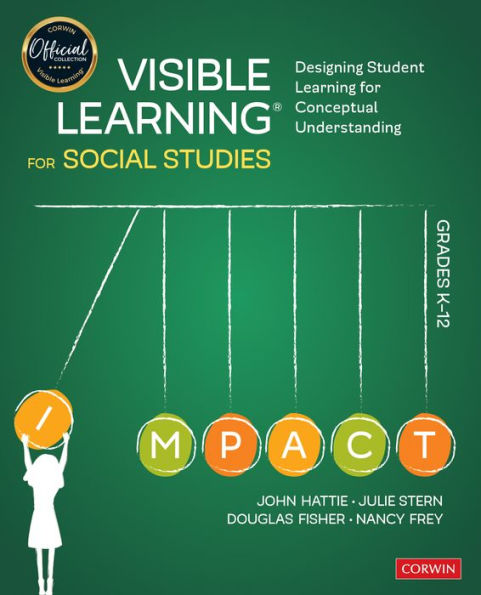Table of Contents
List of Figures xiii
List of Videos xvi
About the Authors xviii
Acknowledgments xxi
Chapter 1 Laying the Groundwork for VISIBLE LEARNING® for Social Studies 1
The Evidence Base 5
Effect Sizes 6
Noticing What Works 8
Learning From What Works 11
Teacher Credibility 11
Teacher-Student Relationships 12
Teacher Expectations 14
General Learning Practices 19
1 Challenge 20
2 Self-Efficacy 21
3 Learning Intentions With Success Criteria 23
Conclusion 30
Chapter 2 Surface Learning in Social Studies 33
Why Surface Learning Is Essential 36
Surface Acquisition and Consolidation 40
Acquisition of Social Studies
Learning Made Visible 42
Leveraging Prior Know/edge 43
Vocabulary Instruction 45
Word and Concept Cards 47
Concept Sorts 50
Teacher Modeling 52
Wide Reading 53
Note-Taking 55
Consolidation of Social Studies
Learning Made Visible 58
Annotating Text 58
Rehearsal and Memorization Through
Spaced Practice 61
Receiving Feedback 63
Collaborative Learning With Peers 64
Conclusion 66
Chapter 3 Deep Learning in Social Studies 69
Moving From Surface to Deep 72
Deep Acquisition and Deep Consolidation 77
Deep Acquisition of Social Studies Learning Made Visible 79
Graphic Organizers and Concept Maps 81
Class Discussion and Questioning 84
Close Reading 89
Deep Consolidation of Social Studies Learning Made Visible 91
Metacognitive Strategies 93
Self-Questioning 94
1 Provide Questions 95
2 Teach Students to Ask Their Own Questions 95
Reciprocal Teaching 97
Feedback to the Learner 99
Conclusion 103
Chapter 4 Teaching for Transfer in Social Studies 105
Moving From Deep Learning to Transfer 107
Types of Transfer: Near and Far 108
The Paths of Transfer: Low-Road Hugging and High-Road Bridging 109
Setting the Conditions for Transfer of Learning 113
Teaching Students to Organize Conceptual Knowledge 114
Identifying Similarities and Differences 115
Reading Across Documents 116
Jigsaw 119
Teaching Students to Transform Conceptual Knowledge 120
Debates 120
Extended Writing 122
Conclusion 125
Chapter 5 Determining Impact, Responding, and Knowing What Does Not Work 127
Determining Impact 128
Pre-Assessment 130
Post-Assessment 131
Regularly Checking for Understanding 135
Responding When There Is Insufficient Impact 136
Response to Intervention 137
Screening 137
Quality Core Instruction 139
Progress Monitoring 140
Supplemental and Intensive Interventions 141
Learning From What Doesn't Work 145
Grade-Level Retention 146
Ability Grouping 146
Matching Learning Styles With Instruction 148
Test Prep 149
Homework 150
Conclusion 151
References 153
Index 159



